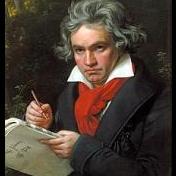The Four Seasons for Flute-Piano duet
How well have I arranged it?
-
1. Which of the complete concertos do you think I did better arranging?
-
Spring0
-
Summer0
-
-
2. Do I have a good balance between when the flute and piano stand out?
-
Yes0
-
No, it is too piano dominant0
-
-
3. Will the flutist know what to do when the tempo changes while a note is being held?
-
Yes0
-
No0
-


Recommended Posts
Join the conversation
You can post now and register later. If you have an account, sign in now to post with your account.